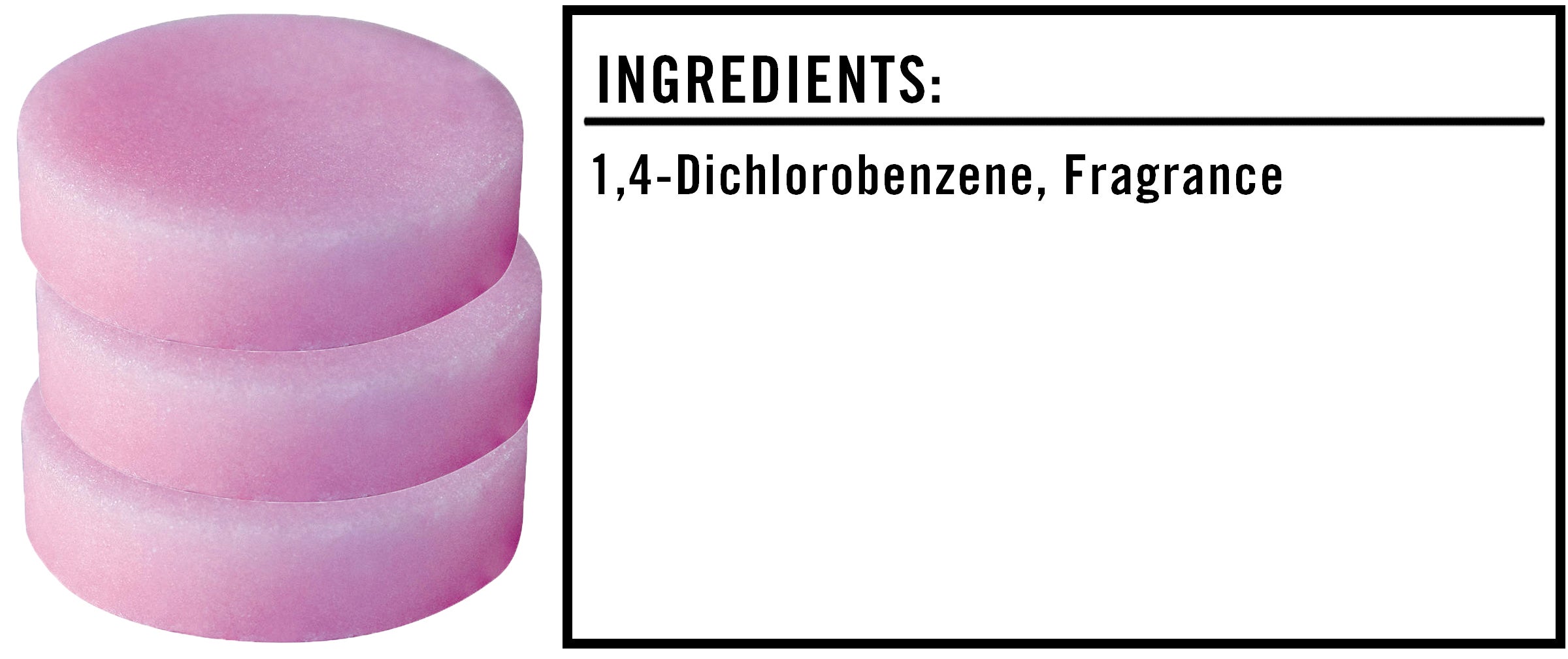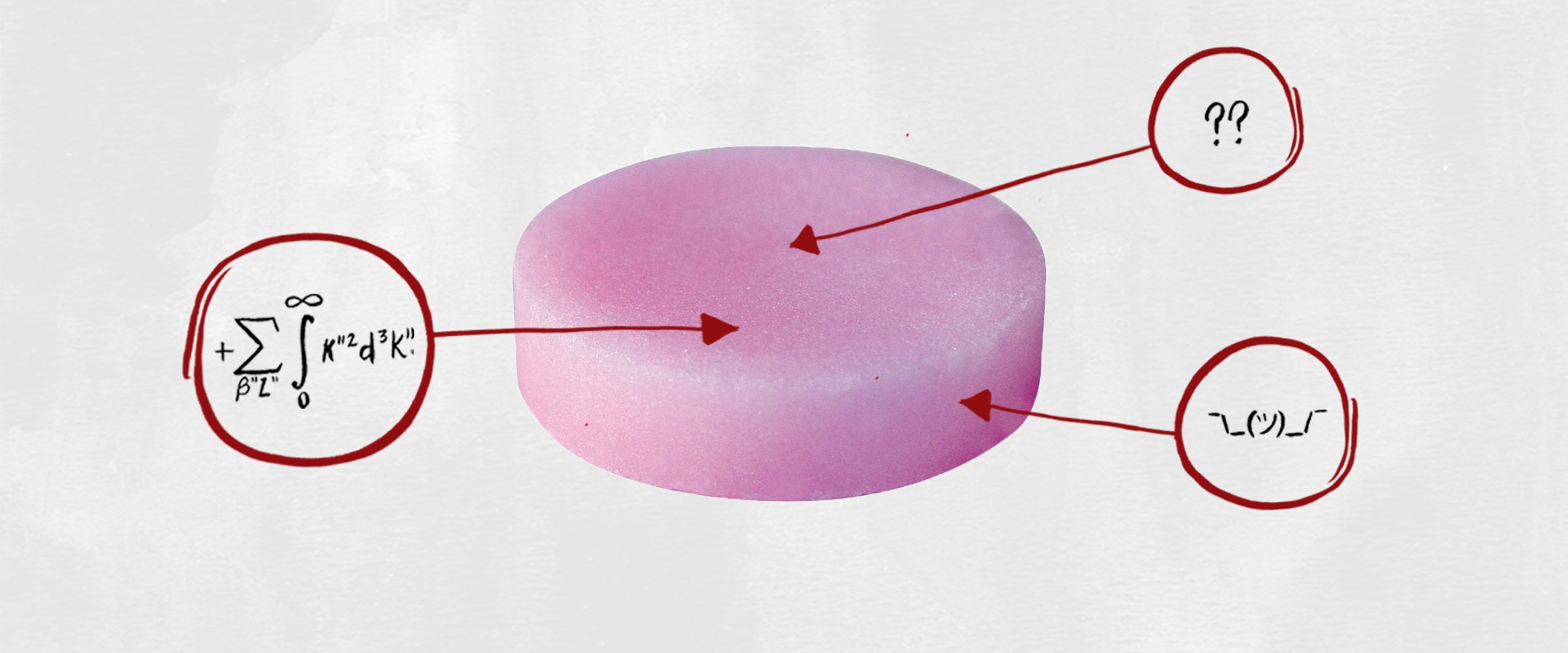We’re often told that you should never eat anything (or put anything on your body) if you don’t recognize everything on the ingredients list. But since most of us have no idea what xanthan gum or potassium benzoate are — or more importantly, what they’re doing to our bodies — we’re decoding the ingredients in the many things Americans put in (and on, or near) themselves.
This edition: Tough Guy Cherry Urinal Cakes, which are made from two (or more) separate ingredients that we’ve broken down in the exact order they appear on this ingredient disclosure form.
Per the “or more” bit, as we learned in our analysis of toilet drops, because cleaning products (and especially urinal cakes) are certainly not intended for ingestion — as seen during the Tide Pod craze of 2017 — the FDA often allows them on the market without much regulation, which usually means no public ingredients lists, which is the case here. That said, the EPA still requires that cleaning-product producers list any active disinfectants or ingredients known to be potentially harmful, which is what we see below.

The Ingredients
1) 1,4-Dichlorobenzene: Also known as paradichlorobenzene, 1,4-dichlorobenzene is both a deodorant and a fumigant insecticide — it can often be found in mothballs as a means of repelling clothes moths. In urinals, it serves to curb the spread of odorous bacteria: In addition to the stinky ammonia that pee naturally contains, it also attracts bacteria that feed on urea and uric acid, which subsequently results in the production of even more ammonia. 1,4-dichlorobenzene, however, inhibits that bacteria from producing the extra ammonia, while also emitting a strong odor in an attempt to cover up any already-existing ammonia (although, only so much can be done to reduce the smell of a literal piss bucket).
There are some questions about the safety of 1,4-dichlorobenzene. Prolonged exposure has some serious effects on the central nervous system that can result in various disorders of the brain. The World Health Organization also considers 1,4-dichlorobenzene to be a possible carcinogen. That said, the dangers of this ingredient, from what we know so far, have less to do with peeing on urinal cakes and more to do with, uh, eating them, which, nope. (If you were to theoretically snack on one, you could expect dizziness, nausea and diarrhea — and a disgusting-ass, rancid pee-mouth — at the very least, and quite possibly some lasting kidney and liver damage.)
2) Fragrance: As we see time and time again, “fragrance” is all we have to go on here, because fragrance recipes are considered to be proprietary information. We do know, however, that this product is being marketed as a cherry urinal cake, which is exactly what every man wants from his urinal experience: The strong odor of cherry-scented pee soup.
The Takeaway
While 1,4-dichlorobenzene might not be the most encouraging ingredient to learn more about, remember, you’re (hopefully) not eating it — you’re just peeing on it. And while urinals never smell great, you’d almost certainly miss urinal cakes if they weren’t around.
Now, uh, can you stop staring so I can take a piss?

